Normal Galaxies
Chapter 25, Galaxies and Dark Matter |

|
Normal Galaxies
Chapter 25, Galaxies and Dark Matter |

|
Galaxies are clusters of stars, gas, dust, and dark matter whose emission is dominated by the light from its stars; their spectra are sum of the individual stars. Galaxies serve as markers in our study of the structure of the Universe. They are interesting in their own right, however. Hubble developed the following morphological (based on their appearance) classification scheme for galaxies.
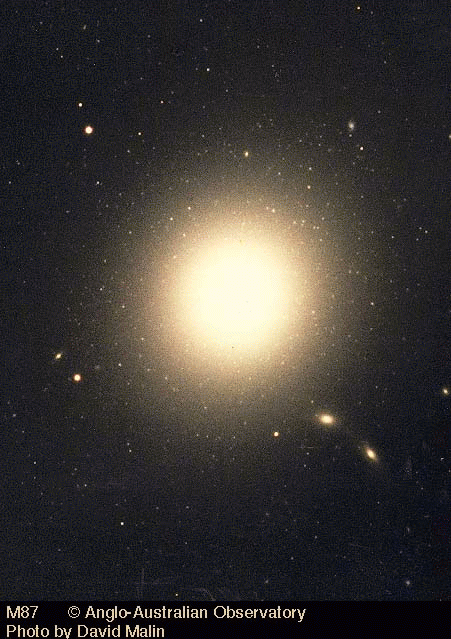 | 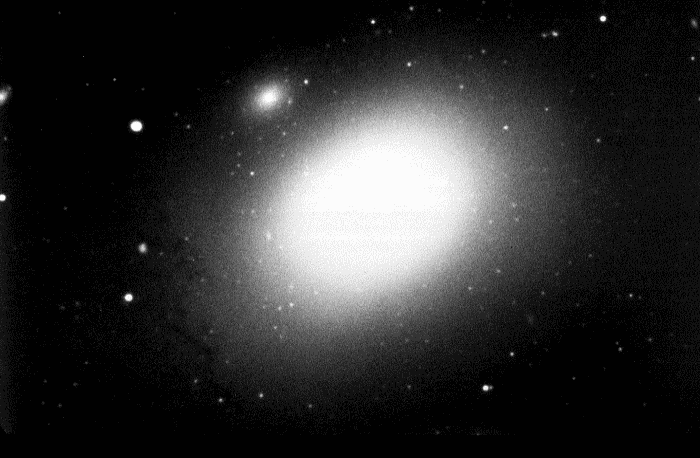
|
 | 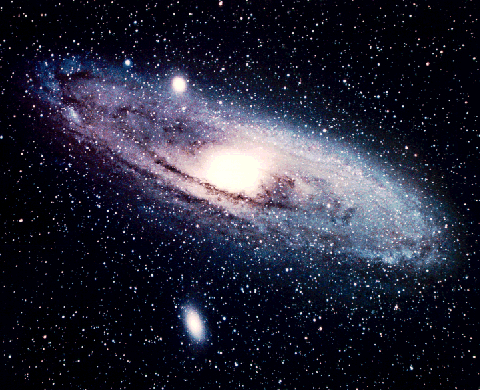
Spiral GalaxiesGalaxies with strong spiral arms in disks, with halos, and a bulge. The disk and bulge contain significant amounts of gas and dust. The light from their disks is dominated by younger, more bluish stars. Type Sa, Sb, and Sc are defined by the sizes of the bulges (from large to small) and the tightness of the winding of their spiral arms (tight to loose). |
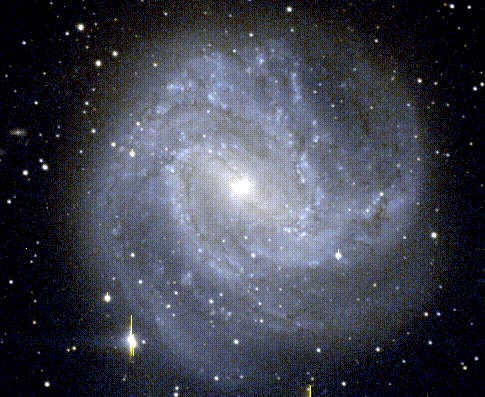
|
 |
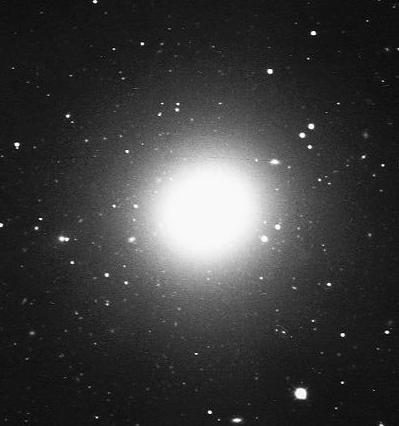 | 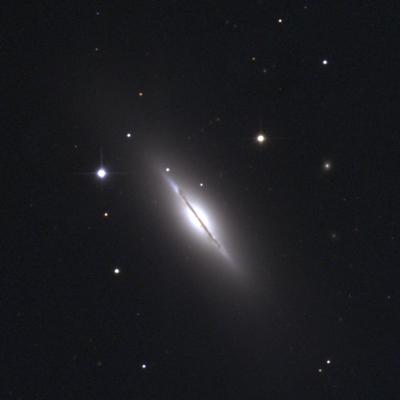
S0 (Lenticular) GalaxiesSeemingly intermediate between E7 ellipticals and Sa and SBa galaxies. S0 galaxies or lenticulars show extensive stellar disks and flattened bulges but lack large amounts of gas and dust and spiral arms. |
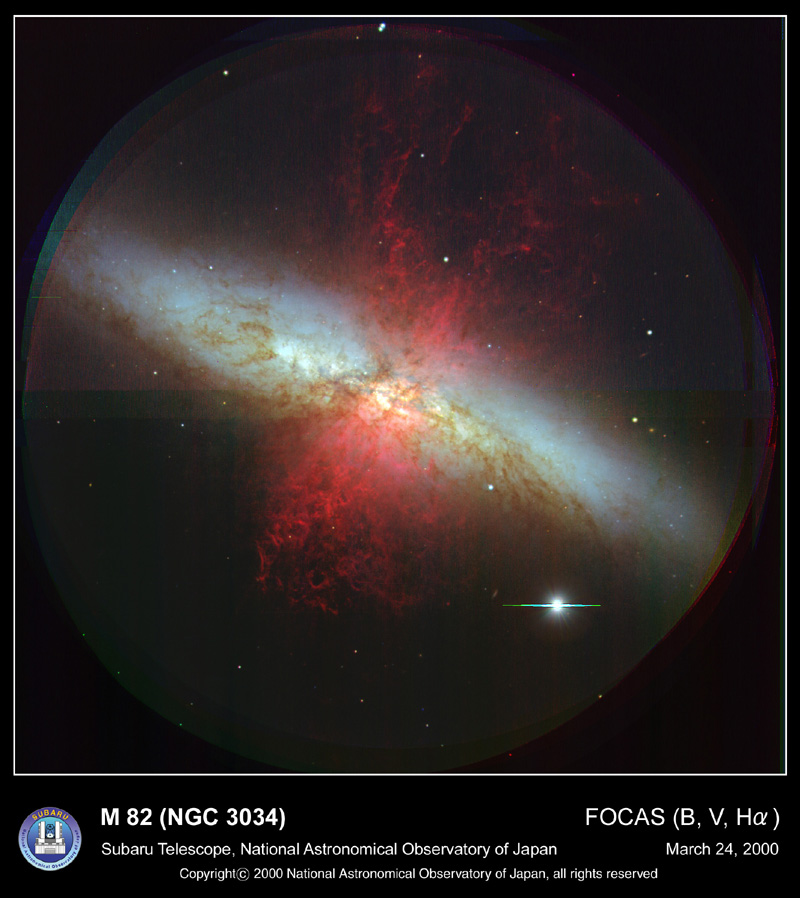 | 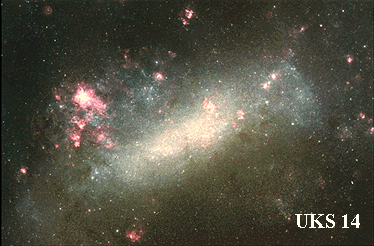 Irregular GalaxiesMore amorphous in shape are the Irregular galaxies. Irr are gas and dust rich and are divided into two classes Irr I and Irr II. Irr I galaxies look like mutated spiral galaxies, the Large Magellanic Cloud (LMC) is an Irr I. Irr are usually smaller than spirals, 108-10 stars; the most common type are the small Dwarf Irregulars. |
Schematically, the Hubble Tuning Fork diagram looks like
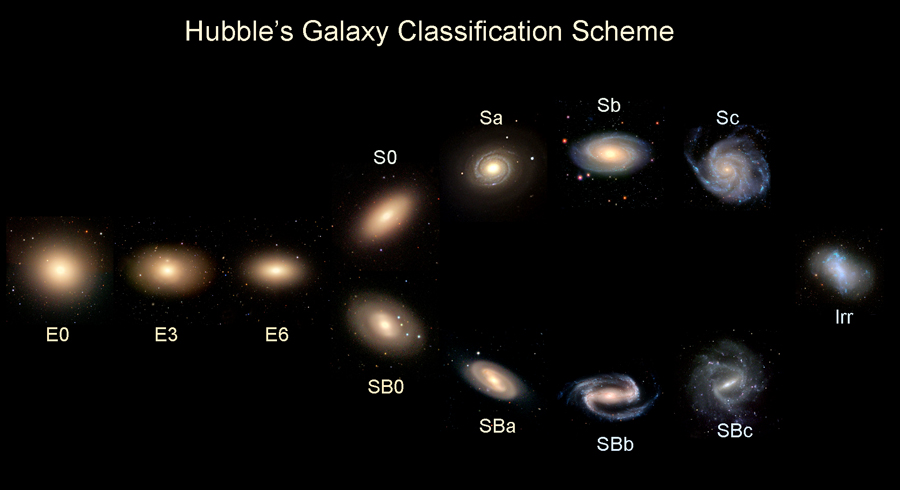
The preceding is not thought to be an evolutionary scheme. There, however, appears to be evolution between the different Hubble classes as a result of collisions between galaxies. The Milky Way galaxy is usually classified as an SBb galaxy in the Hubble scheme.
Despite the fact that the Hubble Sequence is based only on the appearance of galaxies (morphology of galaxies), several physical properties of galaxies vary smoothly along the sequence. We have,
little gas and dust <----------------------> lots of gas and dust
mainly Pop II stars <----------------------> Pop I & II stars
Reddish <----------------------------------> Bluish
little ongoing star formation <------------> star formation
large bulge <------------------------------> small bulge
tight arms <---------> loose arms
The basic idea is that either an elliptical galaxy or spiral galaxy will form depending upon when star formation occurs in the galaxy formation process. Galaxies are thought to form from the collapse of low-density gas clouds. If the gas turns into stars during the early stages of the process, then we essentially have a bunch of BBs collapsing to form the galaxy. Because stars are small and they are far apart, they don't collide in the formation process. This allows the stars to maintain roughly their initial shape and to settle into a roughly spherical form. In this case, they become elliptical galaxies.
If the gas does not turn into stars quickly, then we have a system of collapsing gas clouds. The gas clouds are much larger than are stars and collide much more readily during the formation stage. The collapsing material thus runs into opposing material as it tries to pass through the equatorial plane (for an analogous situation, consider the star formation process). The collisions do not allow the collapsing material to pass through each other and the material is forced to settle into a disk. After the disk forms, star formation begins in earnest and a spiral galaxy is produced.
Galaxies are often times found in rich clusters and because the Universe was smaller in the past, collisions between galaxies are likely to have been more important in the past. This is indicated by the observation that spirals are deficient in the central regions of rich clusters of galaxies and the existence of super-giant elliptical galaxies in the centers of clusters of galaxies. It is thought that the collision between two roughly equal mass spiral galaxies will lead to the formation of an elliptical galaxy while the interaction of a massive galaxy and a low mass galaxy leads to cannibalism where the more massive galaxy eats the less massive galaxy.
Collisions still occur today, however, and may be responsible for driving spiral arms in some galaxies, e.g., M51, the Whirlpool galaxy, and will likely occur in the future. For example, if a large galaxy is around 10 Million light years across and contains several thousand members then, on averae, there are one or two galaxies in every box of size 1 Million light years x 1 Million years x 1 Million years in the cluster. That is, galaxies are separted by hundreds of thousands of light years. A galaxy like the Milky Way has a diamter of 100,000 to 300,000 light years; this indicates that galaxies in clusters nearly overlap and so it is not so surprising that collisions are rather common.
Examples of merging galaxies:
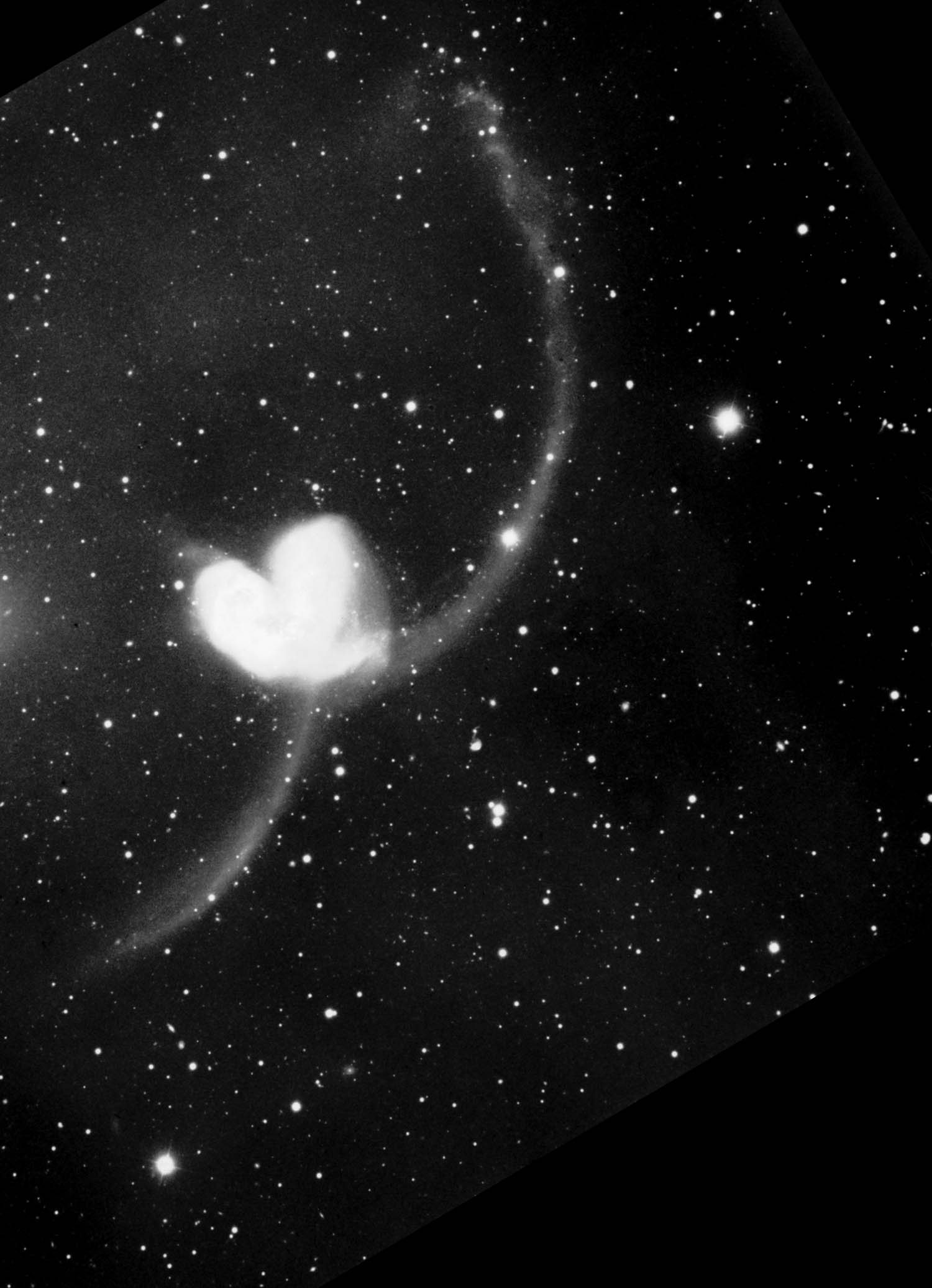 |
 |
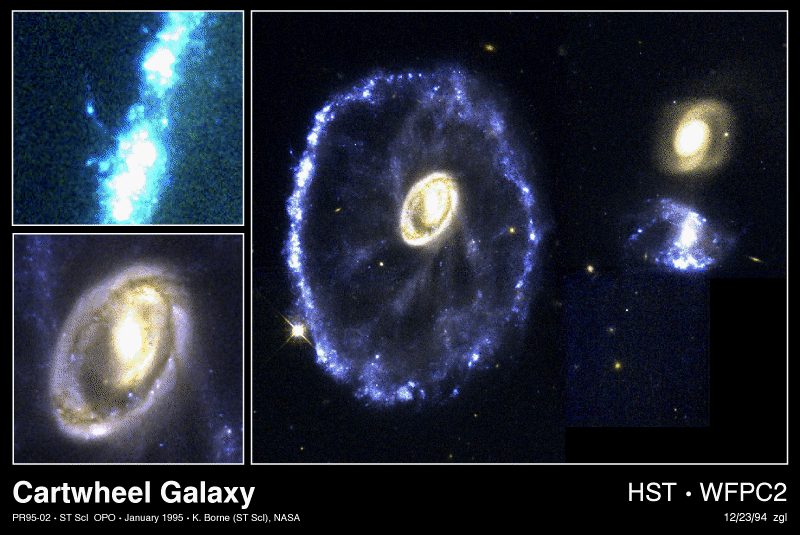
|
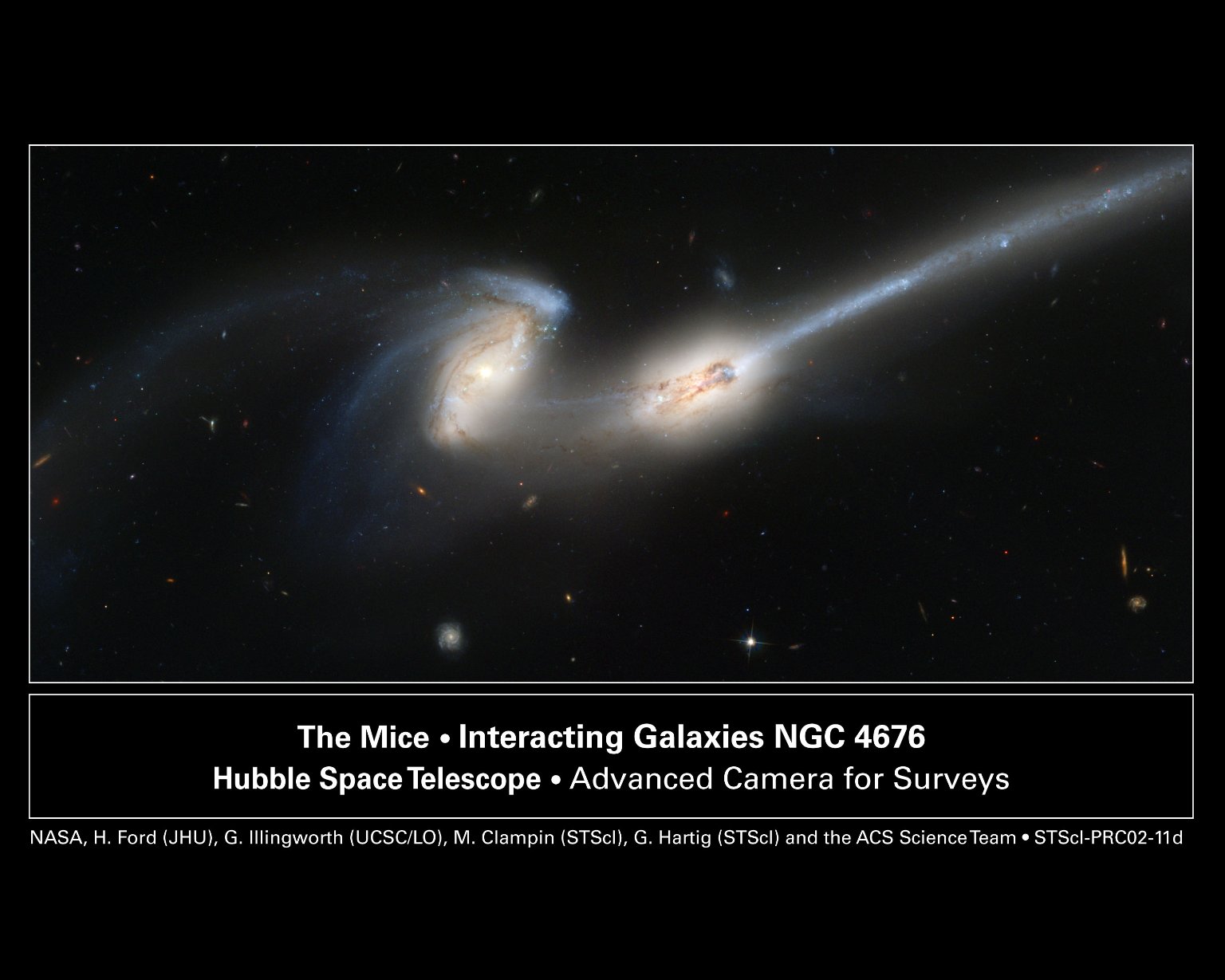
Mice Galaxy |
Question: How did Slipher and Hubble Accomplish this Feat?
 |
|
|
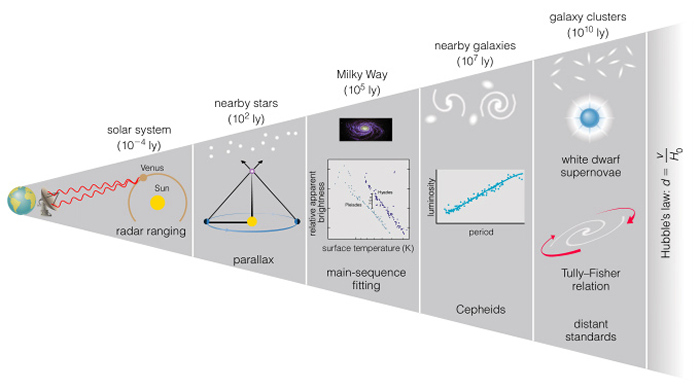 |
|
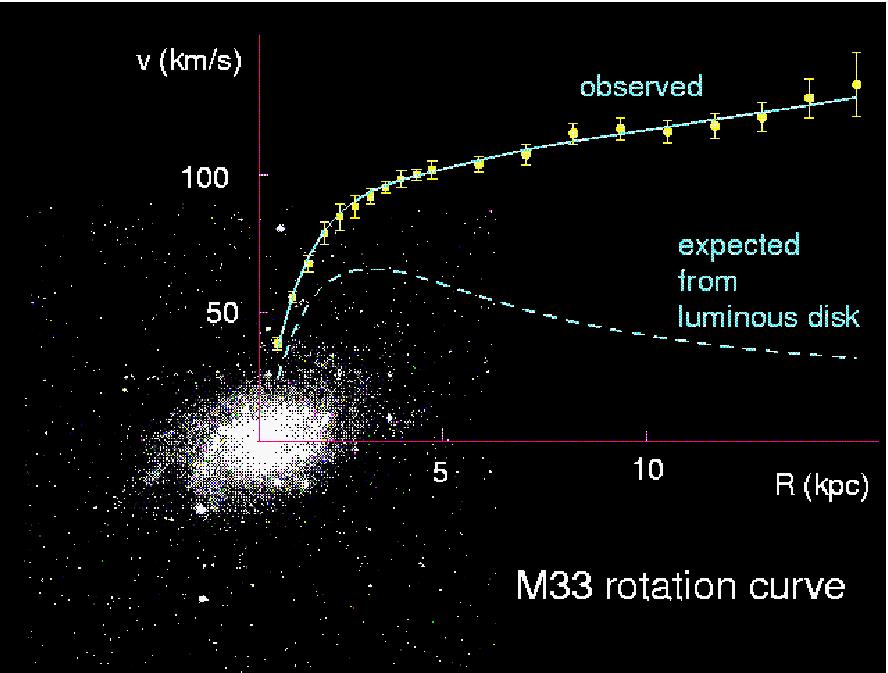 |
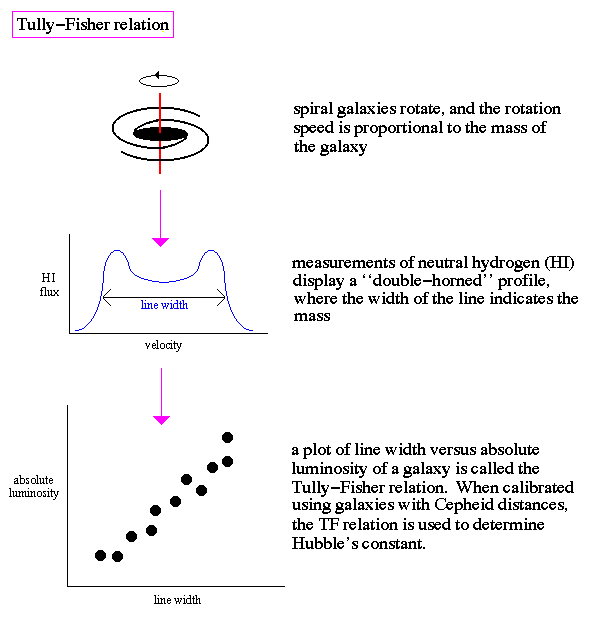 |
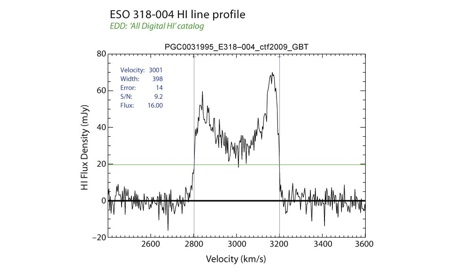
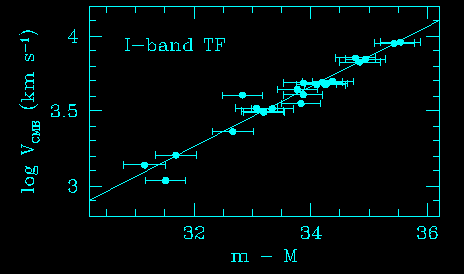 |
The Tully-Fisher Effect must be calibrated. This is done in a series of steps: trigonometric parallax ====> distance to nearby stars ====> distances to nearby clusters of stars (calibrates bright stars and Cepheids [see homework 3] in clusters) ====> distances to nearby galaxies (calibrates Tully-Fisher Effect and Type Ia SNe, see Topic 7). This bootstrapping leads to what the text refers to as the Distance Ladder. |
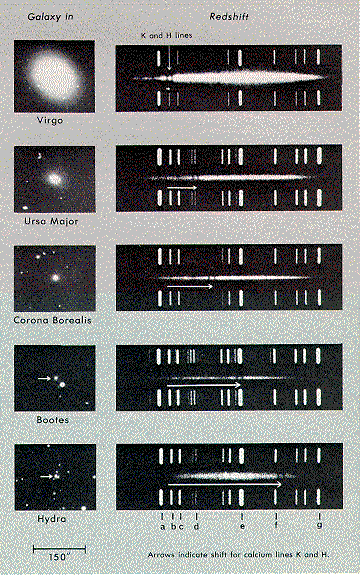
|
|
Following Slipher and Hubble, if we interpret the redshift as due to motion, we can re-state Hubble's Law in its more familiar form. However, note that the redshift measured for distant galaxies is primarily due to the expansion of the Universe, and not to what are called peculiar velocities. An approximation to the redshift, z, driven by the expansion of the Universe is found to be v ~ cz when v is much smaller than cz. Here, c is the speed of light, 300,000 kilometers per second.The best current estimate for the Hubble constant, where |
Redshift, Look-Back Time, and DistanceBecause light travels with a finite speed, c = 300,000 kilometers per second, the light which we receive from distant objects must have left the objects sometime in the distant past. In the table to the right (taken from the text), we show the relationship between the redshift, current distance of the object and the look-back time for the object. Note that the Universe was smaller when the light left the distant objects. |
|
Astronomers estimate that the Universe contains ~40 billion galaxies as bright or brighter than the Milky Way. These galaxies extend throughout most of the Universe and tend to clump, that is, they tend to cluster in space.
 |
Solar System ===> ~ 0.5 light day |
 |
Galaxy Sizes (M101) ===> 0.1 Mly to 1 Mly |
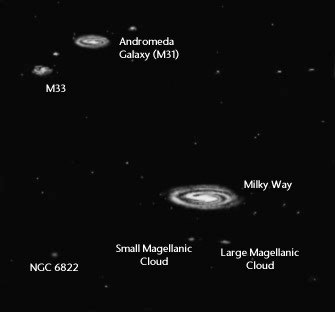 |
Local Group (several dozen members--Milky Way, Andromeda, M33, ...) ===> ~ 3 Mly
|
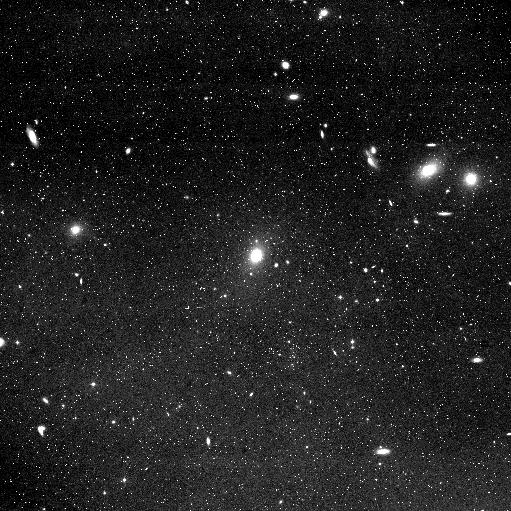
|
Clusters (Virgo cluster contains 1,300, perhaps 2,000 members) ===> ~ 10 Mly
In rich clusters, there is a lack of spirals near their centers (galaxy interactions?) and often times, they contain super-giant Elliptical galaxies (such as M87 in the Virgo cluster) as a result of galactic cannibalism. |
 |
Clusters of Clusters (Hercules Super-Clusters) ===> ~ 300 Mly
|
 |
Filaments, Great Wall, and Voids ===> 600 & 300 Mly (~ 0.6 and 0.3 Bly)
|